
Shipping containers are built to be airtight, presenting beneficial yet challenging properties when converted into homes, which requires special considerations during the design and construction phases.
With the Australian hot summers and cold winters, an airtight home is very important for energy efficiency. However, airtightness is equivalent to lack of ventilation, especially when exterior humidity levels fluctuate throughout the year and interior humidity exceeds comfort level, increasing the risk of condensation and potentially leading to mould growth. It is critical to have a ventilation system that adapts well to temperature and humidity changes, especially if you live in a diverse climate.
Sonic Steel’s well-designed ventilation system is essential to balance airtightness with adequate fresh air exchange.
Beside the mean of natural cross ventilation with operable windows, we use Heat Recovery Ventilator (or HRV) for controlled mechanical ventilation. This helps retain up to 85% of thermal energy while bringing in fresh filtered air in exchange with stagnant air. So on a cold winter night, you can keep warm with all the windows shut, and still be able to enjoy the fresh ventilated air, all from just 8W of energy. The HRV also maintains a constant humidity level inside the home by eliminating excess moisture that’s generated by cooking, washing and breathing.
Having a HRV helps make your home more energy efficient as it reduces the load on your air conditioning system. Most importantly, it ensures a healthy and comfortable living space.
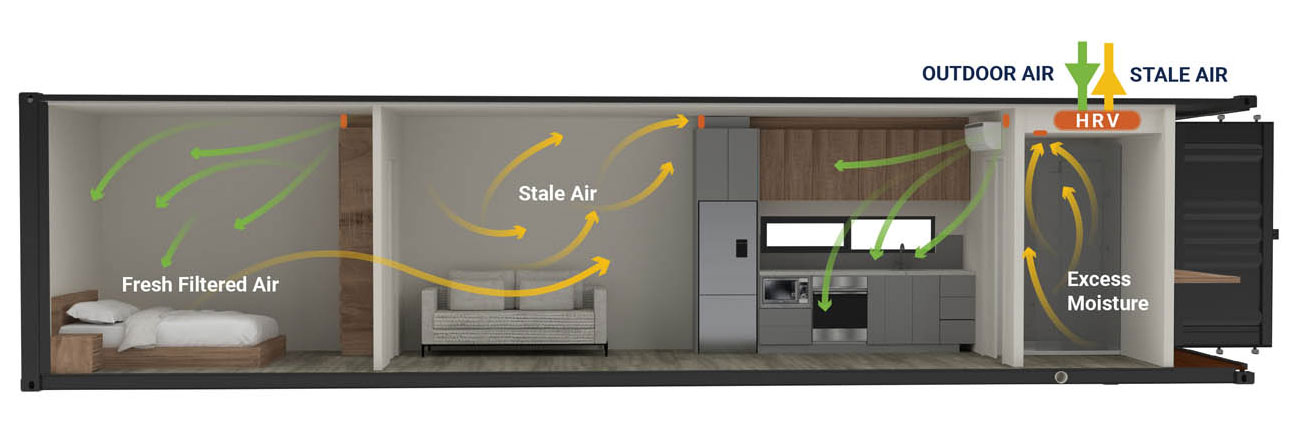
To regulate indoor temperature, we use Daikin’s split system A/C to provide efficient and reliable climate control. The split system circulates internal air continuously to maintain the desired indoor temperature. Daikin’s split systems use inverter technology to adjust the compressor speed based on cooling demand, ensuring efficient energy use and a stable indoor temperature.
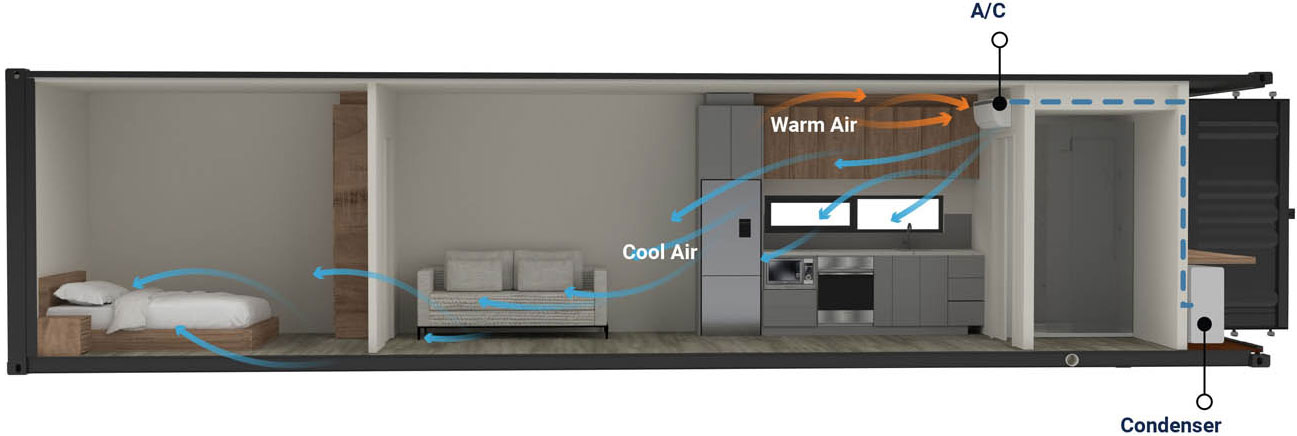
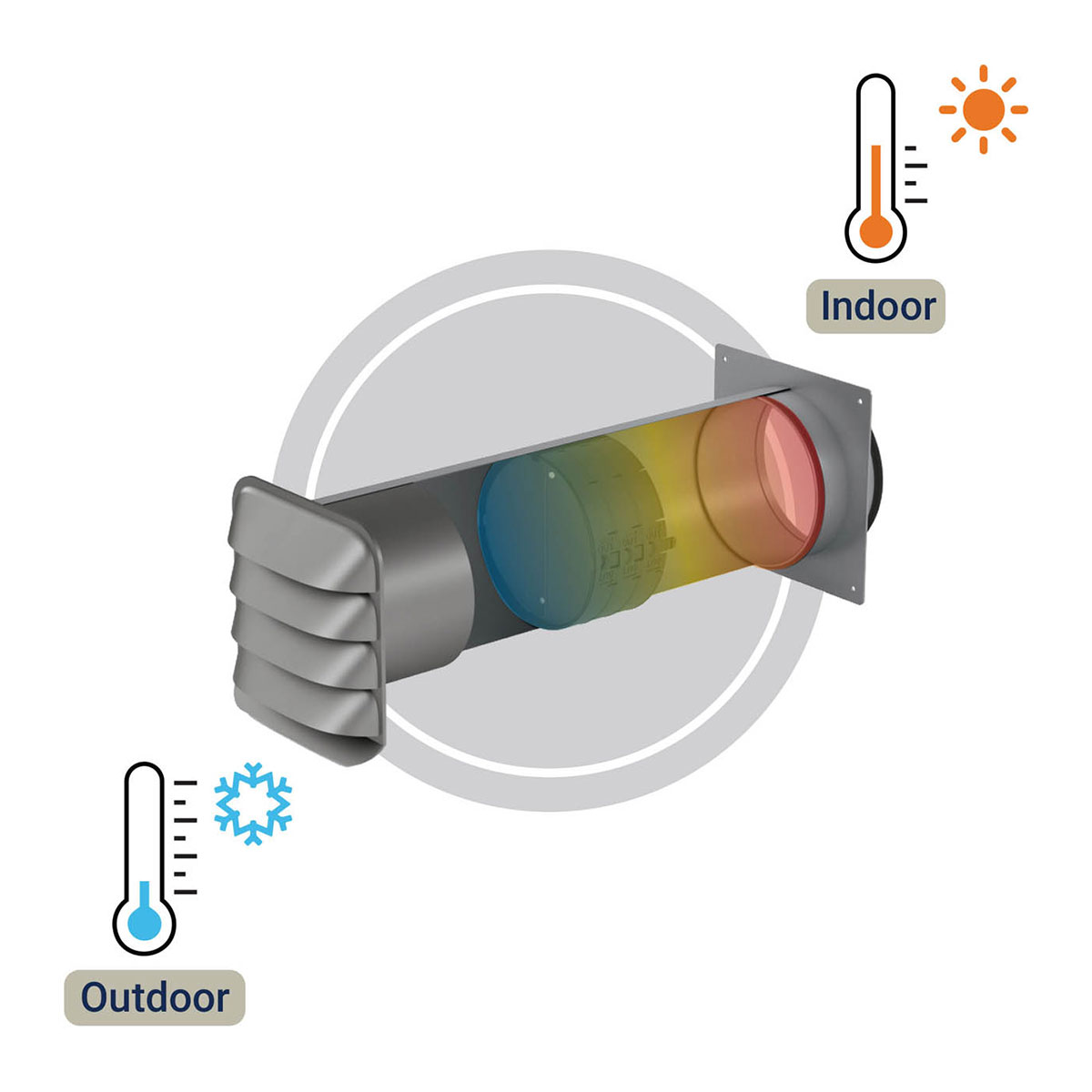
To enhance airtightness and energy efficiency even further, we use Naber THERMOBOX to prevent backdraught through the kitchen exhaust. It works without electricity and uses air as an insulating medium. The system consists of triple dampers arranged one behind the other and sealed by a magnet. When closed, these flaps form two chambers that trap air, which is a poor heat conductor, consequently reducing heat loss.
THERMOBOX ensures that cold or hot outside air stays out, even in strong winds, and prevents valuable heating and cooling energy from escaping when the range hood is not in use.
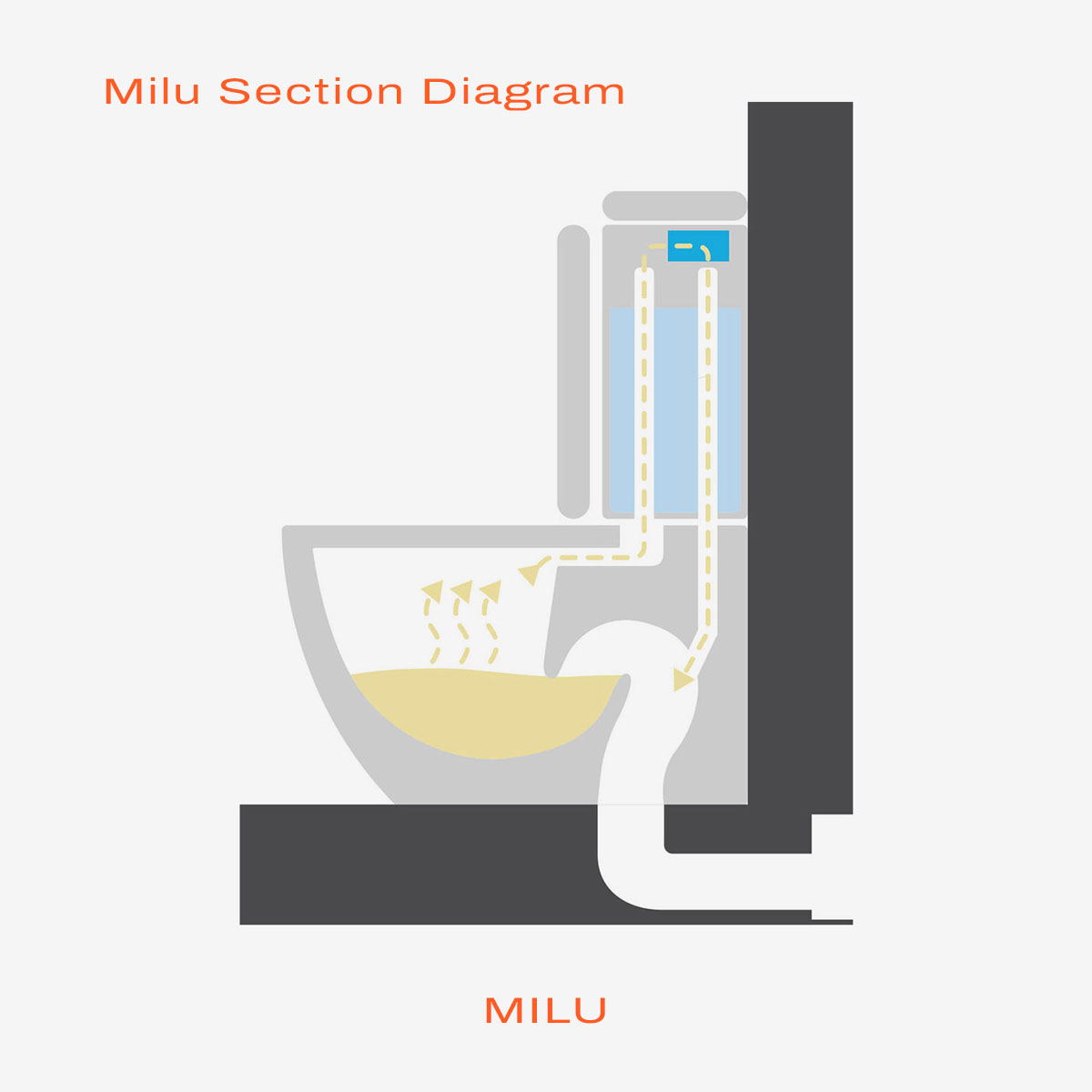
Part of our mission to ensure a fresh and comfortable living environment is to address the toilet odour issue. For flush systems, we use Milu Odourless Toilet which features an in-built fan that quietly extracts odours directly from the toilet bowl and discharges them into the sewer, preventing bad smells from entering the bathroom. The toilet also uses a hygienic, easy-to-clean rimless bowl with a powerful flush, ensuring superior washing and minimal maintenance. Additionally, the design includes a soft-close seat and lid, adding to the overall comfort and convenience for users.
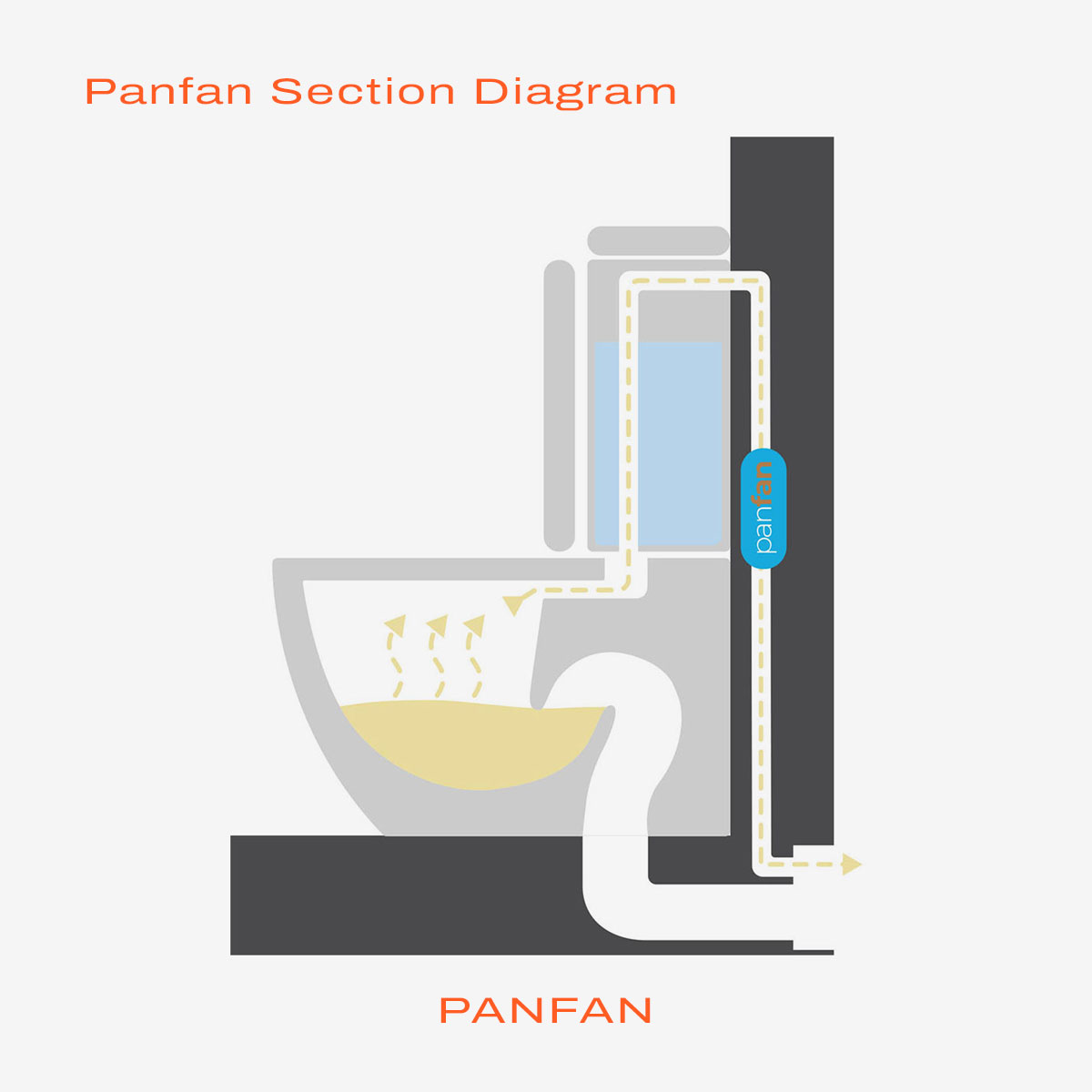
Panfan is another option we use to maintain a clean and pleasant atmosphere in Sonic Steel’s container homes. Panfan features a sophisticated ventilation system that efficiently extracts odours directly from the toilet bowl and vents them outside, ensuring your bathroom remains fresh. This system operates quietly and with minimal energy consumption. The advanced ventilation technology ensures that odours are effectively removed, contributing to a superior bathroom experience and aligning with Sonic Steel’s commitment to quality and innovation.
Effective ventilation helps regulate indoor temperatures, preventing condensation and mould. It ensures fresh, filtered air circulates continuously, promoting a healthy living environment.
The best ventilation systems for shipping container homes include Heat Recovery Ventilation (HRV) systems, such as those offered by Zehnder or S&P. These systems provide continuous fresh air while retaining thermal energy, making them highly efficient and eco-friendly.
Sonic Steel’s VenSulation system combines effective insulation with advanced ventilation to combat condensation and mould. This system ensures that the internal temperature is regulated, air gaps are eliminated, and moisture levels are managed, making your container home comfortable and durable.
Yes, natural ventilation methods can be used effectively. Incorporating strategically placed windows and vents around your container home can enhance natural airflow, especially during mild weather periods. These methods can complement mechanical systems to maintain a pleasant living environment.
To ensure energy efficiency, integrate high-efficiency ventilation systems like HRVs that consume minimal energy while providing optimal air exchange. Pairing these systems with proper insulation, such as Sonic Steel’s VenSulation system, will reduce energy costs and improve indoor climate control, making your container home more sustainable.